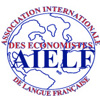Comparative analysis of economic freedom in South American countries in the years 1996–2022
Bartłomiej LACH
Analyx sp. z o.o. in Poznań, Pologne
lach.bartlomiej@gmail.com
https://orcid.org/0000-0002-2023-0378
Krzysztof MALAGA
Université des Sciences Économiques et de Gestion, Poznań, Pologne
Institut d ’ Informatique et d ’ Économie Quantitative
krzysztof.malaga@ue.poznan.pl
https://orcid.org/0000-0001-7079-9880
Abstract : The aim of the article is to present the results on σ-convergence and σ-divergence, as well a multidimensional comparative analysis in the field of economic freedom in 13 countries of South America. The following countries are of interest: Argentina, Bolivia, Brazil, Chile, Colombia, Ecuador, Guyana, Paraguay, Peru, Suriname, Trinidad and Tobago, Uruguay, Venezuela. In order to conduct comparative analyzes, the economic freedom indexes published by The Heritage Foundation in Washington and Wall Street Journal will be used, which measure 12 quantitative and qualitative aspects grouped around the four pillars of economic freedom: 1) Rule of Law—property rights, judicial effectiveness, government integrity; 2) government size—government spending, tax burden, fiscal health; 3) regulatory efficiency—business freedom, labour freedom, monetary freedom; 4) market openness—trade freedom, investment freedom, financial freedom. The statistical data will be supplemented with the overall index of economic freedom for individual countries.
In empirical research, measures of σ-convergence and σ-divergence are used to determine the degree of homogeneity or heterogeneity of surveyed countries from the point of view of 12 areas and averaged economic freedom in the analysed time horizon. The culmination of empirical research is the use of selected methods of multidimensional comparative analysis, including cluster analysis based on the hierarchical methods. The cluster analysis is performed separately for 12 detailed indicators and the averaged index of economic freedom for all 13 countries. The country similarity matrices determined for this purpose represent the distance
between the time series of the economic freedom indices, the measurement of which is based on the distance measures determined on the basis of the Dynamic Time Warping (DTW) algorithm. The R program and dtw and dtwclust packages are used for cluster analysis. This article is a significant supplement to the knowledge about creating economic freedom in 13 countries of South America in the years 1996–2022.
Keywords : economic freedom, σ-convergence and σ-divergence analysis, multidimensional comparative analysis, clusters, dendrograms.
JEL classification : O57, P20, P29, P52.
DOI: https://doi.org/10.18559/RIELF.2022.2.11

